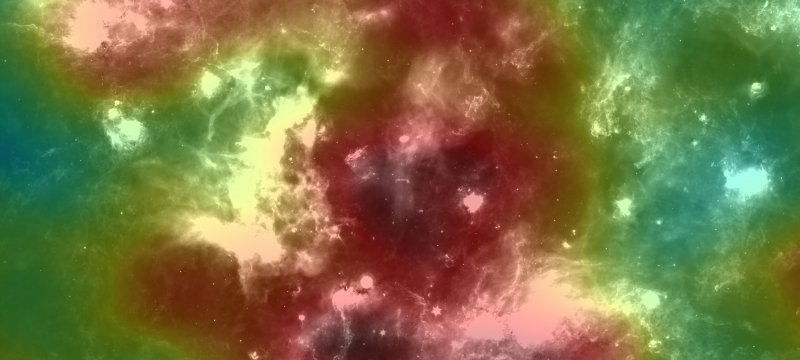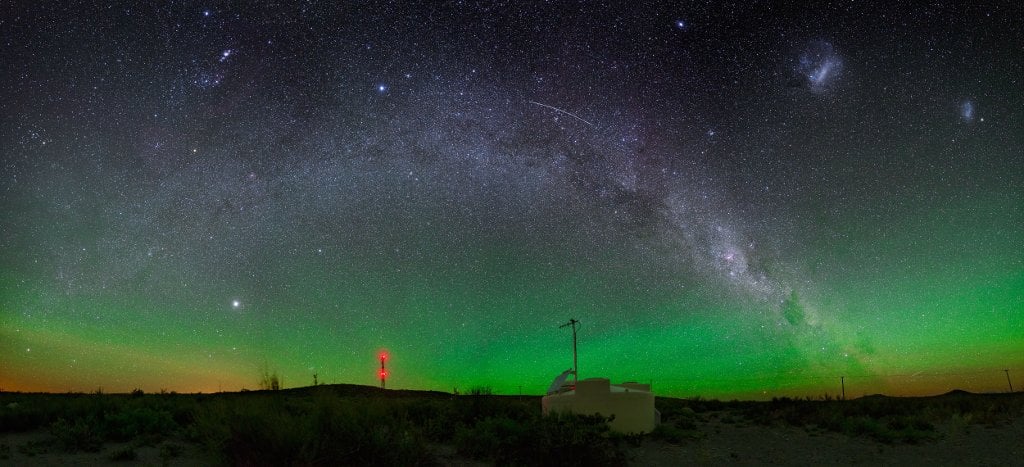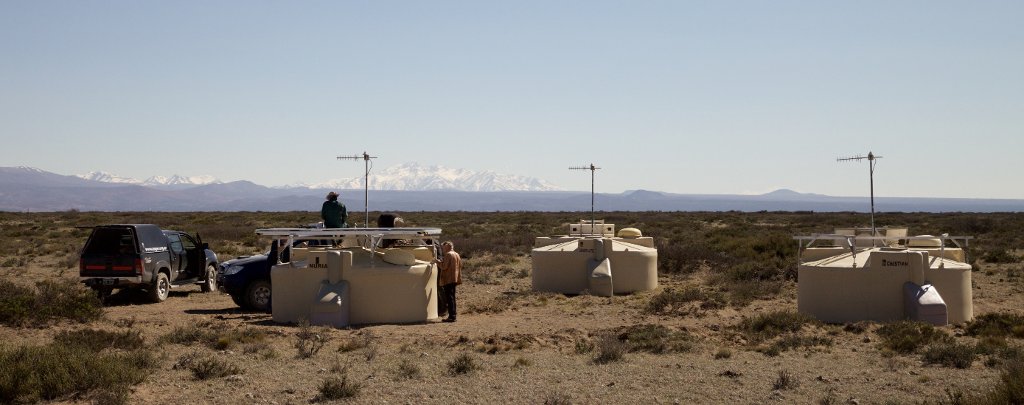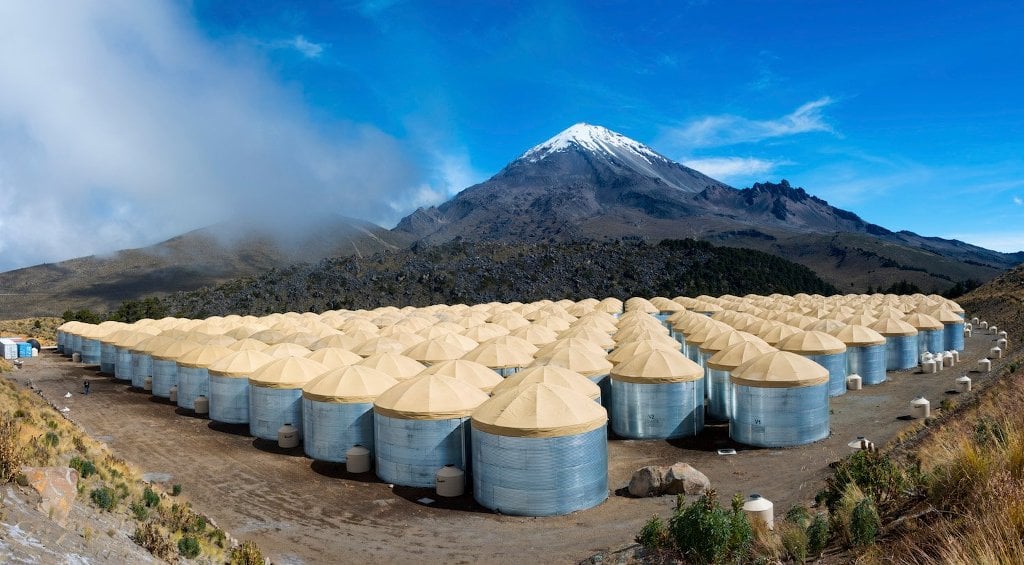The highest-energy cosmic rays come from subatomic interactions within star clusters, not supernovae, say Michigan Tech physicists and collaborators.
For decades, researchers assumed the cosmic rays that regularly bombard Earth from the far reaches of the galaxy are born when stars go supernova — when they grow too massive to support the fusion occurring at their cores and explode.
Those gigantic explosions do indeed propel atomic particles at the speed of light great distances. However, new research suggests even supernovae — capable of devouring entire solar systems — are not strong enough to imbue particles with the sustained energies needed to reach petaelectronvolts (PeVs), the amount of kinetic energy attained by very high-energy cosmic rays.
And yet cosmic rays have been observed striking Earth’s atmosphere at exactly those velocities, their passage marked, for example, by the detection tanks at the High-Altitude Water Cherenkov (HAWC) observatory near Puebla, Mexico. Instead of supernovae, the researchers posit that star clusters like the Cygnus Cocoon serve as PeVatrons — PeV accelerators — capable of moving particles across the galaxy at such high energy rates.
What are PeVatrons?
PeVatrons are believed to be highest-energy sources of cosmic rays in our galaxy, and their definitive identification has so far been elusive. PeVatrons accelerate protons to petaelectronvolts (PeVs), an enormous amount of kinetic energy capable of slinging subatomic particles light-years across the galaxy.
Their paradigm-shifting research provides compelling evidence for star forming regions to be PeVatrons and is published in two recent papers in Nature Astronomy and Astrophysical Journal Letters.
A characteristic of physics research is how collaborative it is. The research was conducted by Petra Huentemeyer, professor of physics at Michigan Technological University, along with recent graduate Binita Hona ’20, doctoral student Dezhi Huang, former MTU postdoc Henrike Fleischhack (now at Catholic University/NASA GSFC/CRESST II), Sabrina Casanova at the Institute of Nuclear Physics Polish Academy of Sciences in Krakow, Ke Fang at the University of Wisconsin and Roger Blanford at Stanford, along with numerous other collaborators of the HAWC Observatory.
From Whence They Came
Huentemeyer noted that HAWC and physicists from other institutions have measured cosmic rays from all directions and across many decades of energy. It’s in tracking the cosmic rays with the highest known energy, PeVs, that their origin becomes so important.
“Cosmic rays below PeV energy are believed to come from our galaxy, but the question is what are the accelerators that can produce them,” Huentemeyer said.
Fleischhack said the paradigm shift the researchers have uncovered is that before, scientists thought supernova remnants were the main accelerators of cosmic rays.
“They do accelerate cosmic rays, but they are not able to get to highest energies,” she said.
So, what is driving cosmic rays’ acceleration to PeV energy?
“There have been several other hints that star clusters could be part of the story,” Fleischhack said. “Now we are getting confirmation that they are able to go to highest energies.”
Star clusters are formed from the remnants of a supernova event. Known as star cradles, they contain violent winds and clouds of swirling debris — such as those noted by the researchers in Cygnus OB2 and cluster [BDS2003]8. Inside, several types of massive stars known as spectral type O and type B stars are gathered by the hundreds in an area about 30 parsecs (108 light-years) across.
“Spectral type O stars are the most massive,” Hona said. “When their winds interact with each other, shock waves form, which is where acceleration happens.”
The researchers’ theoretical models suggest that the energetic gamma-ray photons seen by HAWC are more likely produced by protons than by electrons.
“We will use NASA telescopes to search for the counterpart emission by these relativistic particles at lower energies,” Fang said.
Ingredients for Acceleration
The extremely high energy at which cosmic rays reach our planet is notable. Specific conditions are required to accelerate particles to such velocities.
Grants and Funding
This research is funded by the National Science Foundation (NSF), the U.S. Department of Energy Office of Science, the LDRD program of Los Alamos National Laboratory, CONACyT, México, and the Polish Science Centre (among others).
The higher the energy, the more difficult it is to confine the particles — knowledge gleaned from particle accelerators here on Earth in Chicago and Switzerland. To keep particles from whizzing away, magnetism is required.
Stellar clusters — with their mixture of wind and nascent but powerful stars — are turbulent regions with different magnetic fields that can provide the confinement necessary for particles to continue to accelerate.
“Supernova remnants have very fast shocks where the cosmic ray can be accelerated; however, they don’t have the type of long confinement regions,” Casanova said. “This is what star clusters are useful for. They’re an association of stars that can create disturbances that confine the cosmic rays and make it possible for the shocks to accelerate them.”
What is a Cherenkov light detector?

More than 300 massive water tanks at HAWC sit waiting for cosmic ray showers — shower of particles that moves at nearly the speed of light toward the ground. When the particles hit the tanks, they produce coordinated flashes of blue light in the water, allowing researchers to reconstruct the energy and cosmic origin of the gamma ray that kicked off the cascade.
But how is it possible to measure atomic interactions on a galactic scale 5,000 light-years from Earth? The researchers used 1,343 days of measurements from HAWC detection tanks.
Huang explained how the physicists at HAWC trace cosmic rays by measuring the gamma rays these cosmic rays produce at galactic acceleration sites: “We didn’t measure gamma rays directly; we measured the secondary rays generated. When gamma rays interact with the atmosphere, they generate secondary particles in particle showers.”
“When particle showers are detected at HAWC, we can measure the shower and the charge of secondary particles,” Huang said. “We use the particle charge and time information to reconstruct information from the primary gamma.”
More Eyes on the Skies
In addition to HAWC, the researchers plan to work with the Southern Wide-field Gamma-ray Observatory (SWGO), an observatory currently in the planning stages that will feature Cherenkov light detectors like HAWC but will be located in the southern hemisphere.
“It would be interesting to see what we can see in the southern hemisphere,” Huentemeyer said. “We will have a good view of the galactic center that we don’t have in the northern hemisphere. SWGO could give us many more candidates in terms of star clusters.”
Future collaborations across hemispheres promise to help scientists around the world continue to explore the origins of cosmic rays and learn more about the galaxy itself.
Michigan Technological University is an R1 public research university founded in 1885 in Houghton, and is home to nearly 7,500 students from more than 60 countries around the world. Consistently ranked among the best universities in the country for return on investment, Michigan's flagship technological university offers more than 120 undergraduate and graduate degree programs in science and technology, engineering, computing, forestry, business, health professions, humanities, mathematics, social sciences, and the arts. The rural campus is situated just miles from Lake Superior in Michigan's Upper Peninsula, offering year-round opportunities for outdoor adventure.







Comments